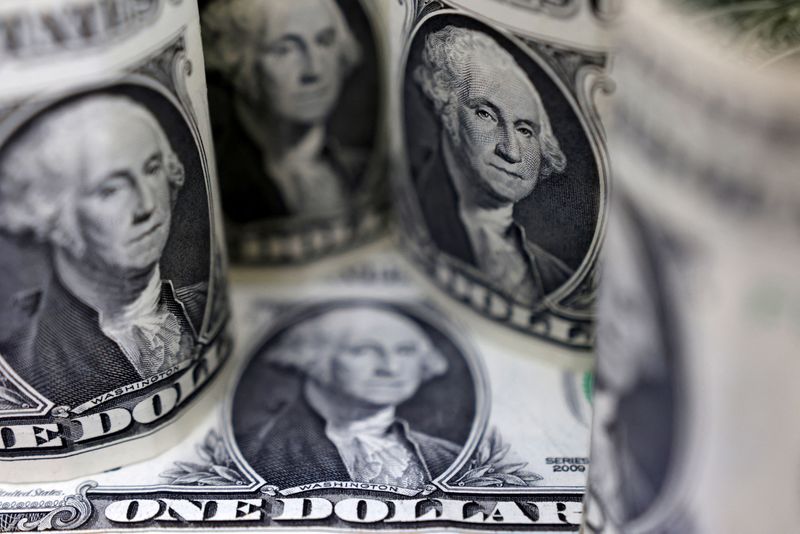Kiwi falls after hefty rate cut, U.S. dollar edges up
By Brigid Riley and Alun John
TOKYO/LONDON (Reuters) -The New Zealand dollar slumped on Wednesday after the country's central bank cut interest rates by 50 basis points, while the U.S. dollar nudged up against most currencies and hit a new two month high on a basket of peers.
The kiwi tumbled 0.8% on the U.S. dollar to $0.6086 and hit its lowest in nearly two months after the Reserve Bank of New Zealand's move which was accompanied by clear dovish messaging suggesting more rate reductions were on the cards in the coming months.
It was down on the crosses too and the Australian dollar rose 0.6% on its antipodean peer to NZ$1.1047.
"We see mounting near-term headwinds (for the New Zealand dollar against the U.S. dollar) including hawkish repricing for the Fed, potential geopolitical escalation, de-risking ahead of the US election, exhausted momentum in terms of trade, and now a more-dovish-than-expected RBNZ," said Lenny Jin, Global FX Strategist at HSBC.
"Potentially strong fiscal stimulus from China is an upside risk but the (Australian dollar) is set to benefit more."
China's finance ministry on Wednesday called a press conference for Saturday on fiscal policy, raising expectations of stimulus, a day after a news conference from the state planner - the National Development and Reform Commission - disappointed markets by yielding no major new stimulus details.
That did little for the Aussie , down 0.3% on the U.S. dollar at $0.6727.
Investors will also be watching the release of minutes of the Federal Reserve's September meeting, due later in the day, which will show discussions about what at the time had appeared to be a deteriorating labour market that ended with all but one policymaker agreeing to a 50-basis point cut.
That will be somewhat out of date after last Friday's robust non-farm payroll data caused markets to reprice near-term Fed rate cut expectations. Investors now have about an 85% chance of a quarter basis point reduction priced in, reflecting a slim probability the Fed will leave rates unchanged, the CME FedWatch tool showed.
The U.S. September Consumer Price Index report on Thursday will be the main piece of data this week, as investors watch to see whether there are any signs that the stronger labour market is having an effect on inflation.
With markets turning less certain on Fed cuts while still pricing in easing elsewhere, the dollar index , touched 102.7 its highest since 16 Aug. It was last up 0.17% at 102.64.
The euro was down 0.16% at $1.09633, while the pound was down a similar amount at $1.3080, having touched a near one month low.
Dollar/yen ticked up 0.23% to 148.475 yen, after touching a seven-week high of 149.10 on Monday.
The yen has been whiplashed since Japan's new Prime Minister Shigeru Ishiba, known for being a critic of easy monetary policy, surprised markets with recent remarks that the nation is not ready for further rate hikes.
Ishiba has set a snap election for Oct. 27, ahead of the Bank of Japan's October monetary policy meeting and the U.S. presidential election next month.
Verbal warnings about rapid currency moves issued by Japanese authorities earlier this week should "further restrain" dollar/yen from rising to the 150 range, Chang said.
Source: Investing.com
